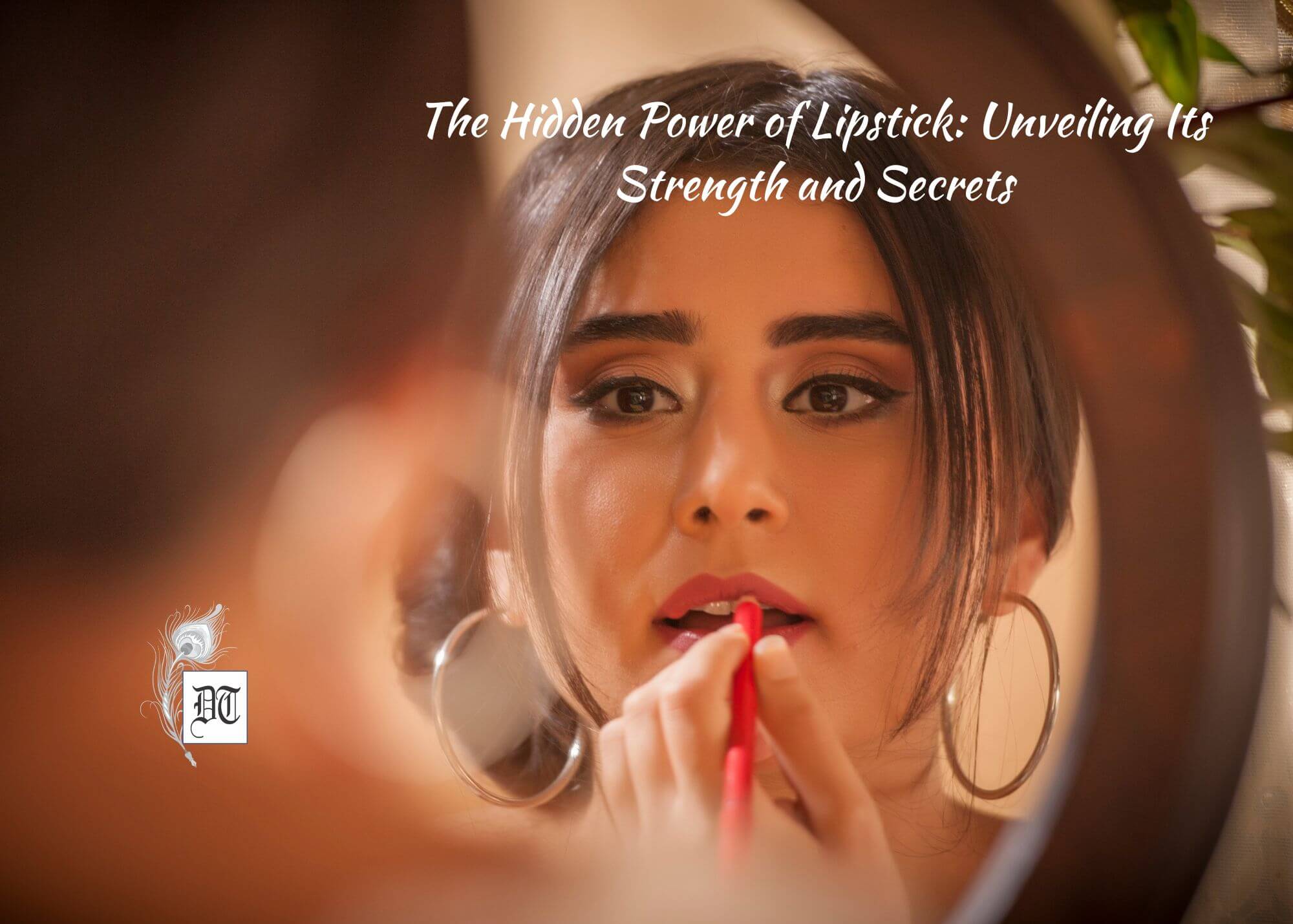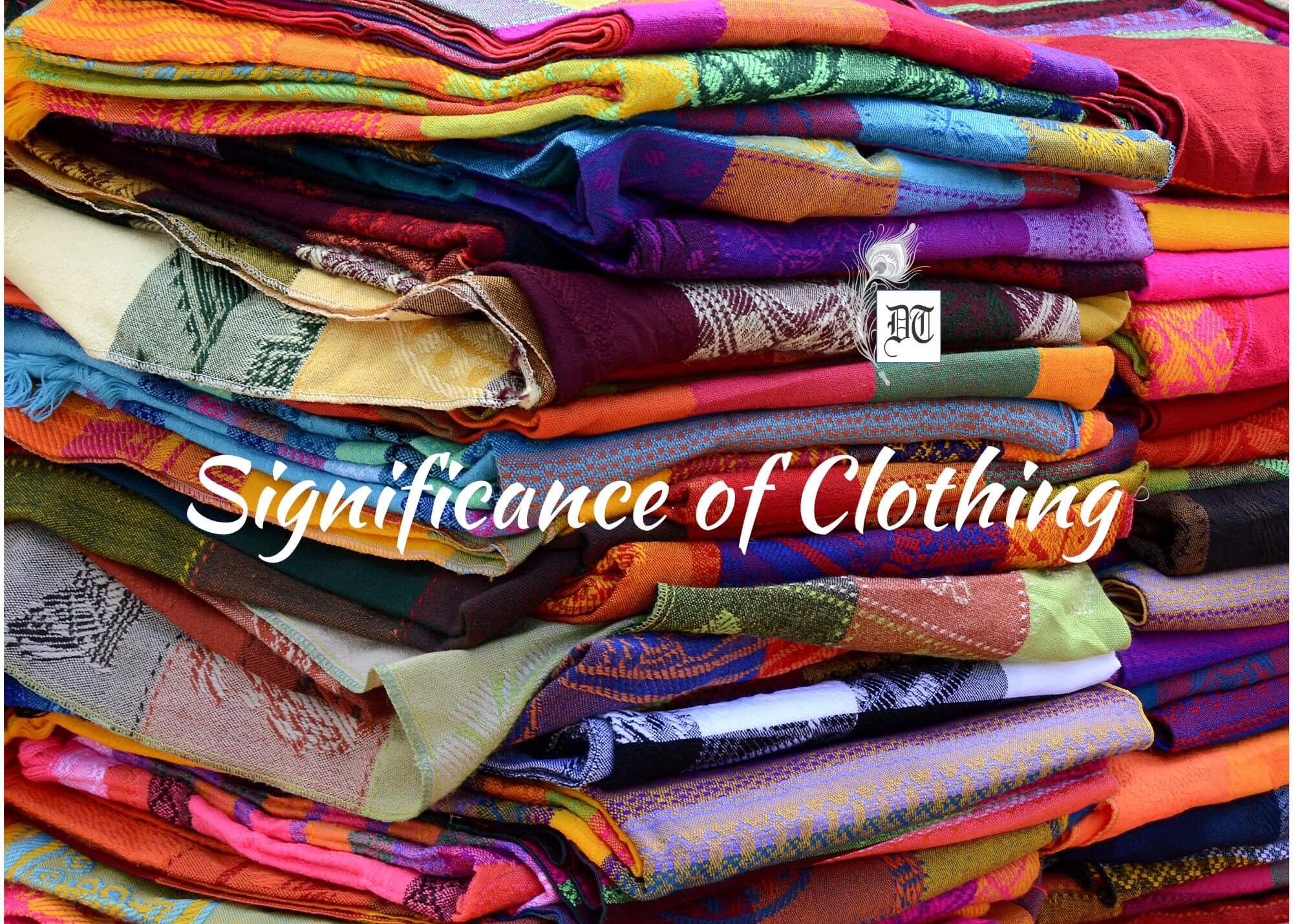Organic clothing is not just for the elite, or fashionable or high-end clientele, but for everyone who recognises the need of sustainability, and appreciates the fact that eco-friendly clothing is best for the skin. Many brands today are offering a wide range of organic clothing from chic, trendy fashion to colourful ethnic, elegant sarees, to infant clothing. Everyone is taking efforts to make sustainable materials. These efforts will make a noticeable difference only if sustainability isn’t an after-thought or a gimmick, but it’s a guiding principle that a company refers to when the time comes to make difficult decisions. Here’s Neeti’s in-depth analysis about Green Fashion, exclusively for Different Truths.
Without doubt, one of the hottest buzz words today, is ‘Organic’.
Be it fabrics, vegetables, fruits or spices, everyone is using the word ‘Organic’ or ‘Going Green’ to draw attention to themselves!
Quoting one of the brands, “To save the planet one has to either fly to moon, become super hero chemically, kill all the terrorists, or just go organic.”
Organic clothing is not just for the elite, or fashionable or high end clientele, but for everyone who recognises the need of sustainability, and appreciates the fact that eco-friendly clothing is best for the skin. Many brands today are offering a wide range of organic clothing from chic, trendy fashion to colourful ethnic, elegant sarees, to infant clothing.
Everyone is taking efforts to make sustainable materials. These efforts will make a noticeable difference only if sustainability isn’t an after-thought or a gimmick, but it’s a guiding principle that a company refers to when the time comes to make difficult decisions.
Some Important Buzz Words and Simplified Meanings
- What is Sustainable Fashion? Sustainable Fashion or commonly called Green or Eco Fashion is a part of the growing design philosophy and trend of sustainability. In simple words it means, the goal is, to create a system which can be supported indefinitely in terms of the impact of humans on environment and social responsibility. It can be seen as an alternative trend against the culture of ‘Fast Fashion’. Thus, Green Fashion refers to consciously styled clothing that uses environmentally sensitive fabrics and responsible production techniques.
- Sustainable Design is when a product is created and produced with consideration to the environmental and social impact it may have throughout its total life span, including its carbon footprint.
- Carbon Footprint is defined as the total amount of greenhouse gases produced to directly and indirectly support human activities, usually expressed in equivalent tons of carbon dioxide (CO2). One of the big concerns of such brands is the speed and volume of modern consumption. Some new trends today are Fast and Slow Fashion, i.e., the classic brands always had products which were referred to as “timeless,” “carefully curated,” “smaller,” “better,” “less,” and “made to last for a long time.” This approach is a more acceptable and calming effort than the usual formula of pushing customers to just buy more. The right product always pulls the customer towards itself and thus is a success.
- Fast Fashion is a contemporary term used by Fashion retailers to express that designs move from catwalk quickly to capture current fashion trends. Fast Fashion clothing collections are based on the most recent fashion trends presented at Fashion Week in both the spring and the autumn of every year.
Brands like ZARA, Forever 21, H&M, etc are all brands that follow Fast Fashion.
What’s hot and brewing? Slow Fashion!
Unlike the prevailing ‘Fast Fashion’, the contrasting ‘Slow Fashion’ is when production techniques ensure that quality manufacturing will lengthen the life of the garment. The garments are developed keeping in mind the cultural and emotional connection, which leads to more value in the mind of the consumer.
If the manufacturer’s reuse material that has already been made and maybe used once, they reduce the industry’s carbon footprint.
Government can levy high taxes in early stages of development of designs and materials, in order to deter fashion companies from purchasing or producing materials that are not made with recycled, chemical-free or re-purposed materials
According to Earth Pledge, a non profit organisation, which is committed to promoting and supporting sustainable development, the data researches say, “At least 8,000 chemicals are used to turn raw materials into textiles and 25% of the world’s pesticides are used to grow non-organic cotton. This causes irreversible damage to people and our environment and still two thirds of a garment’s carbon footprint will occur after it is purchased.” Think about the tonnes of clothing consumed and being thrown away before its real wear and tear or life cycle ends, this makes the fashion industry is the second largest cause of pollution worldwide.
How is this Influencing Fashion?
- Descriptive labels advising where (and how) the clothing is made. By reading the description of individual pieces of clothing, we as consumers, can get a sense of a company’s production practices.
Are the clothes made domestically or in developing countries?
Are measures taken to compensate workers fairly?
Any practices, to ensure their safety?
If the clothes are handmade, traded fairly, made domestically or manufactured with pride in the process, that will be explicitly stated. Companies that invest time, energy and resources to produce their clothing ethically say it outright as they want the consumers to understand that they do care about our environment.
What Raw Material is Being Used? The Fibre’s Composition
The material used to make the garment/product is 80% of the cost. A very high volume of clothing is produced each year, this takes a very heavy toll on our Mother Earth.
There are many factors when considering the sustainability of a material. The renewability and source of a fibre, the process of how a raw fibre is turned into a textile, the working conditions of the people producing the materials, and the material’s total carbon footprint.
Sustainable brands are aware of these challenges and use more responsible materials like Linen, Hemp, Tencel, Organic Cotton, Alpaca and Recycled or Organic Non-mulesed wool. Vintage or deadstock material can be used by the company to nullify their environmental impact.
Many designers have begun experimenting with Bamboo fibre, which absorbs greenhouse gases during its life cycle and grows quickly and plentifully without pesticides. Even with this, bamboo fabric can cause environmental harm in production due to the chemicals used to create a soft viscose from hard bamboo.
Some believe that stalk fibres and particularly Hemp is one of the best choice for eco fabrics due to its ease of growth, though it remains illegal to grow in some countries.
These facts regarding production of new materials make recycled, reclaimed, surplus, and vintage fabric arguably the most sustainable choice, as the raw material requires no agriculture and no manufacturing to produce
Recycled fibres are the way to make clothing more sustainable
Tonnes and tonnes of scraps of fabrics are a daily waste in the apparel /accessory industry. Recycled or reclaimed fibres are made from these scraps of fabrics collected and then processed back into short fibres for spinning into a new yarn.
There are only a few facilities globally that are able to process the clippings. Variations range from a blend of recycled cotton fibres with added RePET yarns for strength to recycled cotton fibres with virgin acrylic fibres, which are added for colour consistency and strength.
Upcycled Fibres
In simple words, Upcycling means reusing (discarded objects or material) in such a way so as to create a product of higher quality or value than the original.
So, many materials like plastic, which were not considered as a raw material to make fibres and considered as trash, may be upcycled to make fibres and thus new kind of fabrics.
Due to the efforts taken to minimise harm in the growth, manufacturing, and shipping of the products, sustainable fashion is typically more expensive than clothing produced by conventional methods
Some Indian brands and NGO’s that are into Recycling and Upcycling of materials to make products/apparel are:
- Green the Gap (Gtg) ‘the upcycle store,’ a branch of the NGO Swechha in Delhi, raises awareness on environmental issues by reusing waste in innovative ways to create high quality, useful products such as clothing, accessories and home decor. GtG empowers consumers to make choices about their shopping habits, and change the way they think about waste disposal.
- SWaCH (Solid Waste Collection and Handling or, officially, the SWaCH Seva Sahakari Sanstha Maryadit, Pune) is India’s first wholly-owned cooperative of self-employed waste pickers / waste collectors. It is an autonomous enterprise that provides front-end waste management services, including door-to- door collection, resource recovery and trade and waste processing, to the citizens of Pune. SWaCH seeks to provide decent livelihoods to those working in the recycling industry.
- Established in 2003, SmartBin is the global leader in remote monitoring and management systems for the waste collection industry. SmartBin created a market-leading solution that optimizes the effectiveness of waste collection servicing through the generation of real-time information and business intelligence.
- WasteAid is an international organisation that connects poor and vulnerable communities to waste management resources and expertise. WasteAid aims to change the way waste is dealt with, so that it is more environmentally friendly. They also seek to help vulnerable communities deal with the negative impacts associated with the poor management of solid wastes.
- Chintan is an environmental research and action group that works for environmental justice in partnership with people and groups from diverse sections of society. Their focus is on ensuring equitable and sustainable production and consumption of materials, and improved disposal of waste. An important part of this is ensuring green jobs, security and dignity for the urban poor, many of whom earn a living as waste recyclers. Others are The Ugly India.
Celebrities, models, and designers such as Lucy Tammam, Stella McCartney, Frock Los Angeles, Amour Vert, Edun, Stewart+Brown, Shalom Harlow and Summer Rayne Oakes has recently drawn attention to socially conscious and environmentally friendly fashion.
Portland Fashion Week, which has featured sustainable designers and apparel since 2005, has also attracted international press for its efforts to sustainably produce a fashion week that showcases 100% eco-friendly designs.
Eastern European prisoners are designing sustainable prison fashion in Latvia and Estonia under the “Heavy Eco” label, part of a trend called “prison couture”.
Ryan Jude Novelline created a ballroom gown constructed entirely from the pages of recycled and discarded children’s books known as The Golden Book Gown that prove[d] that green fashion can provide as rich a fantasia as can be imagined.
Eco-couture designer Lucy Tammam uses Eri Silk (Ahimsa/Peace silk) and organic cotton to create her eco friendly couture evening and bridal wear collections.
Other sustainable clothing and footwear labels include Elena Garcia, Nancy Dee, By Stamo, Outsider Fashion, Beyond Skin, Oliberté, Hetty Rose, DaRousso and Eva Cassis.
The sustainable fashion movement has begun to make significant in-roads in the bedding segment of the home fashion category. Brands such as, Under the Canopy, by Marci Zaroff and Boll and Branch make all products from organic cotton only.
The Hemp Trading Company is an ethically driven underground clothing label, specialising in environmentally friendly, politically conscious street wear made of hemp, bamboo, organic cotton and other sustainable fabrics.
The National Association of Sustainable Fashion Designers is one of those organisations. Its purpose is to assist entrepreneurs with growing fashion related businesses that create social change and respect the environment.
Red Carpet Green Dress, founded by Suzy Amis Cameron, is a global initiative showcasing sustainable fashion on the red carpet at Oscars.
Eco design is an approach to designing products with special consideration for the environmental impacts of the product during its whole lifecycle. The lifecycle of a product is usually divided into procurement, manufacture, use, and disposal.
An ecological footprint is a measure of human impact on Earth’s ecosystems. It’s typically measured in area of wildness or amount of Natural Capital consumed each year.
Some simple Tips to Go Green!
1. Avoid use of plastic wherever possible. Use cloth bags made of recycled clothes or upholstery material. Use stainless steel bottles and not plastic ones.
2. Go back to the old techniques of applique, patchwork, kantha, etc. using old materials and giving them a new designer look!
3. Hand-me- downs from elder to younger siblings are also a way to reduce the consumption pattern and reuse a well-maintained piece of clothing.
4. See DIY videos available online to give new look to existing T-shirts, canvas shoes etc and give them a makeover. This increased their life and is also good for the environment.
5. Upcycle old clothes, accessories, bottles, CDs, furniture, etc and make innovative use of them.
6. Walk or cycle more, than used fuel based vehicles. Reduce carbon footprint.
7. Do not print unless necessary!
8. Car Pool and reduce pollution in the environment.
9. Paper can be recycled to make more paper or even make recycled notebooks, coasters, bookmarks, Paper Mache art, etc.
10. Donate your old clothes, toys etc in good condition to the needy so that they can complete their life cycle and be of use to someone, and spread more smiles.
11. Conserve energy by using energy saving devices and being conscious about the use of lights, water, etc.
12. Eat homemade or local, organic food that has not travelled all the world and increased its carbon footprint. Local fresh grown will be healthy too.
13. Raise healthy and eco-conscious children who respect Mother Earth and act accordingly.
14. Continue to educate yourself and others about how to ‘Go Green’. Be an example.
So looking forward to more conscious citizens and a greener future!
Reduce, Recycle and Reuse!
©Neeti Banga
Pix sourced by the author from Net.










 By
By